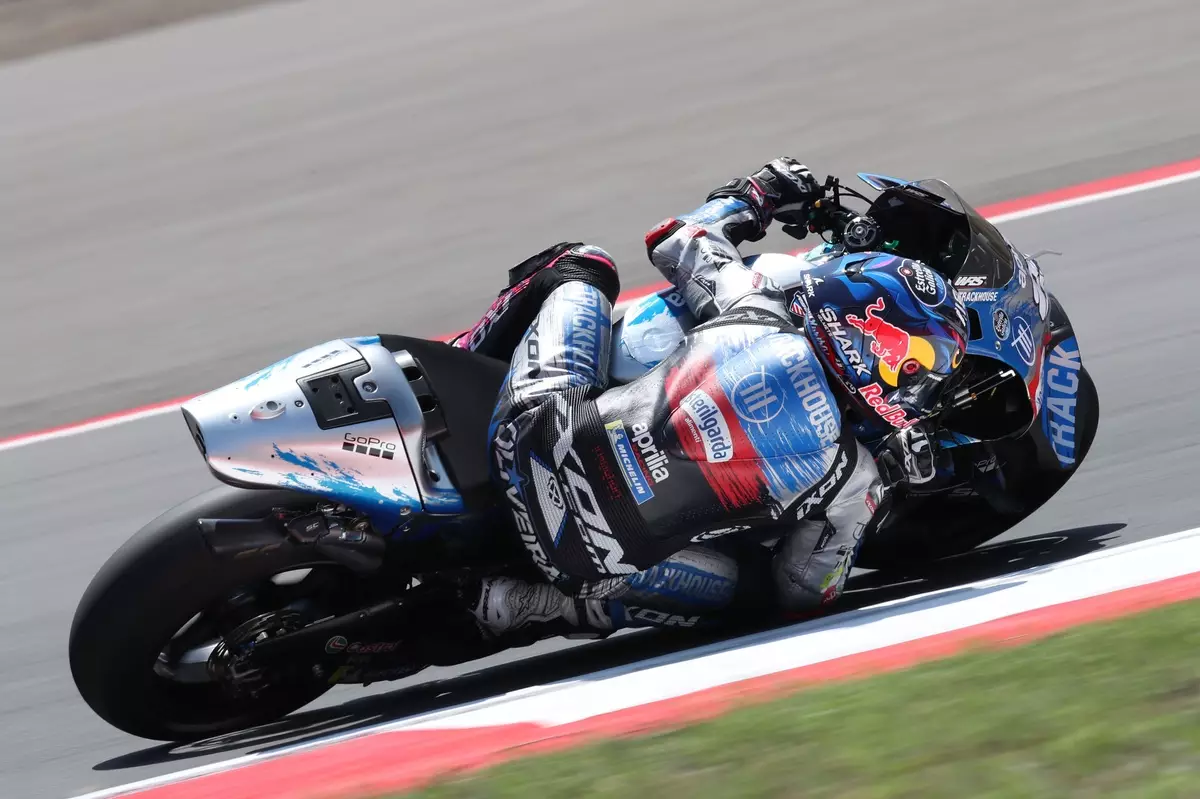The Unfortunate Setback of Miguel Oliveira An Analysis of Circumstances and Consequences
As a MotoGP enthusiast, the thrill of the race is something that always keeps me on the edge of my seat. There’s nothing quite like witnessing the high-speed chases, the strategic maneuvers, and the raw determination of riders. One rider who has always caught my attention is Miguel Oliveira. His journey through the highs and lows of MotoGP has been nothing short of captivating. Recently, however, Oliveira faced an unfortunate setback that reminded us all of the fragility and unpredictability of this sport.
Miguel Oliveira’s story took a dramatic turn during a practice session at Mandalika, Indonesia. It was one of those moments that makes you hold your breath, as a short circuit in his Aprilia bike’s control unit led to a loss of control. The result was devastating—a fractured wrist that not only halted his performance but also significantly altered his career trajectory. As someone who follows these races closely, it was a reminder of just how quickly fortunes can change in MotoGP.
Oliveira’s accident at the Indonesian Grand Prix was particularly heart-wrenching because it occurred in a place where he had previously celebrated victory with KTM. The crash happened during Free Practice 1 (FP1), at a notoriously tricky section of the track—Turns 3-4—a sequence of left-handers that has tested many riders before him. The electronic failures that led to his crash are a testament to both the marvels and perils of modern motorcycle technology.
Key Takeaways
- Miguel Oliveira’s setback highlights the unpredictability of MotoGP.
- Technological failures can have severe consequences in high-speed sports.
- Oliveira’s resilience shines through despite challenges.
The Incident at Mandalika
The gravity of Miguel Oliveira’s incident became apparent as he underwent immediate surgery in Lisbon following the crash. Missing not only the Indonesian round but also four subsequent races due to his injury was a significant blow during such a critical point in the season. For any athlete, missing opportunities to compete while watching others advance is incredibly frustrating, and Oliveira was no exception.

Reflecting on his recovery process, Oliveira shared that he was back on track after about six weeks. While this timeline might seem relatively short, it felt much longer when considering the missed opportunities and races slipping by without him. The psychological impact of watching from home while others raced in his place was challenging, yet it was also a period for introspection and resilience building.
Return to Racing
Despite these setbacks, Oliveira made an impressive return to MotoGP during the season finale in Barcelona. Securing a 12th place finish may not have been as triumphant as he hoped, but it demonstrated his indomitable spirit and determination to overcome adversity. Watching him back on track was inspiring for fans like me who have followed his journey and rooted for his comeback.
The question remains: how will this period of inactivity influence Oliveira’s performance going forward? His transition from KTM to Aprilia’s satellite team RNF Racing had already posed challenges, with technical difficulties and physical setbacks adding layers to his journey. Yet, through it all, he continues to push forward with optimism and tenacity.
Career Shifts and Future Prospects
Oliveira’s move from KTM to Aprilia marked a significant shift in his career. Despite achieving five Grand Prix victories with KTM, his time with RNF/Trackhouse proved challenging without reaching the podium in two years. Ending the season ranked 15th in the championship was stark compared to his earlier successes—something that any dedicated fan couldn’t help but notice.

Looking ahead, Oliveira’s upcoming ride with Yamaha-supported Pramac team in 2025 opens new doors filled with opportunities and challenges alike. As he reflects on his experiences with Aprilia—marked by struggles both technical and physical—he remains hopeful for what lies ahead. His narrative serves as a powerful reminder of perseverance amid adversity.
Final Thoughts
The tale of Miguel Oliveira is one that resonates deeply within the world of professional motorsport. In an arena where razor-thin margins separate success from failure, factors beyond any rider’s control can dramatically alter career paths. Whether it’s mechanical failures or fierce competition, each race holds its own set of unpredictable variables.
As Oliveira prepares for another chapter with Pramac Racing next season—or perhaps even sooner—his resilience will undoubtedly guide him onward despite past obstacles faced along this tumultuous yet rewarding journey through MotoGP racing history thus far.
MotoGP
Miguel Oliveira
motorcycle racing
Aprilia
Pramac Racing


Leave a Reply